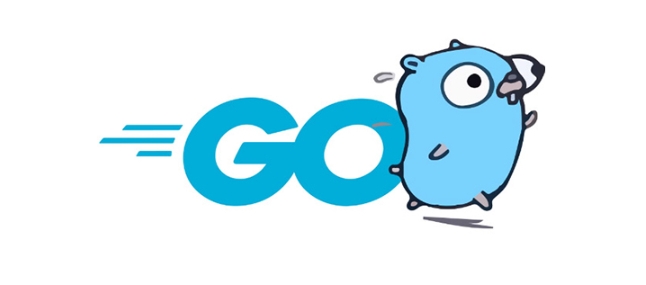The init() function is used in Go language to initialize package-level variables and set the running environment. Its execution rules include: 1. Each package can define multiple init() functions and execute them in declaration order; 2. The execution order of init() in different files is uncertain; 3. The initialization of package-level variables is preceded by init(). Typical uses such as registering components, loading configurations, binding hooks, etc., such as automatic registration of database drivers. When using it, you should pay attention to avoid problems such as excessive side effects, circular dependence, debugging difficulties and inconsistent testing behavior. It is recommended to keep init() light and have no side effects.

In Go, init() is a special function that is automatically executed when the program starts, and is used to initialize package-level variables or set the running environment. It is not called explicitly like a normal function, but is automatically called by the Go runtime system. Understanding the role and usage of init() is very helpful for organizing code logic and ensuring that dependencies are initialized correctly.

Basic rules of init() function
Each Go package can define multiple init() functions, which are executed in order of declaration. But it should be noted that the execution order of init() in different files is uncertain , so do not rely on this order to perform critical initialization operations.
- Each package can have multiple
init()functions - Package-level variable initialization is performed before
init() - Multiple
init()in the same file are executed in the order of occurrence - The execution order of
init()between different files is not guaranteed
For example:

// file1.go
var a = initA()
func initA() int {
fmt.Println("Initializing A")
return 0
}
func init() {
fmt.Println("File1 init 1")
}
func init() {
fmt.Println("File1 init 2")
}The output is roughly as follows (assuming this is the first file to be processed):
Initializing A File1 init 1 File1 init 2
Typical uses of init()
init() is often used to do some initialization work that cannot be completed in the variable declaration stage, such as registering certain components, loading configurations, checking the running environment, etc.

Common scenarios include:
- Register a database driver
- Initialize the global variable structure
- Set default values ??or bind hook functions
- Load configuration files into memory
For example, many database libraries will automatically register themselves through init() , so that users only need to import packages to use:
func init() {
database.Register("mysql", mysqlDriver{})
}In this way, as long as someone imports this package, the MySQL driver will be automatically registered into the system.
What to pay attention to when using init()
Although init() is convenient, it also has some easy places to get stuck, especially in large projects.
- Avoid excessive side effects : because init() is executed when a package is imported, if it does too much (such as connecting to the network), it will make the import "expensive".
- Avoid circular dependencies : If two packages depend on each other and each has complex
init(), it may result in deadlocks or initialization failures. - Debugging difficulty : Errors in init() are not easy to catch and track, so it is recommended to add logs or panic as soon as possible.
- The behavior may be inconsistent during testing : packages imported in unit tests will also trigger init(), which may cause the behavior of the test environment to be inconsistent with the production environment.
So it is recommended to use init() only if necessary, and try to keep it lightweight and side effects free.
Basically that's it. init() is a powerful but cautious tool that needs to be used. Proper use can help you write clearer and more modular Go programs.
The above is the detailed content of Go init() function explained. For more information, please follow other related articles on the PHP Chinese website!

Hot AI Tools

Undress AI Tool
Undress images for free

Undresser.AI Undress
AI-powered app for creating realistic nude photos

AI Clothes Remover
Online AI tool for removing clothes from photos.

Clothoff.io
AI clothes remover

Video Face Swap
Swap faces in any video effortlessly with our completely free AI face swap tool!

Hot Article

Hot Tools

Notepad++7.3.1
Easy-to-use and free code editor

SublimeText3 Chinese version
Chinese version, very easy to use

Zend Studio 13.0.1
Powerful PHP integrated development environment

Dreamweaver CS6
Visual web development tools

SublimeText3 Mac version
God-level code editing software (SublimeText3)
 What is the standard project layout for a Go application?
Aug 02, 2025 pm 02:31 PM
What is the standard project layout for a Go application?
Aug 02, 2025 pm 02:31 PM
The answer is: Go applications do not have a mandatory project layout, but the community generally adopts a standard structure to improve maintainability and scalability. 1.cmd/ stores the program entrance, each subdirectory corresponds to an executable file, such as cmd/myapp/main.go; 2.internal/ stores private code, cannot be imported by external modules, and is used to encapsulate business logic and services; 3.pkg/ stores publicly reusable libraries for importing other projects; 4.api/ optionally stores OpenAPI, Protobuf and other API definition files; 5.config/, scripts/, and web/ store configuration files, scripts and web resources respectively; 6. The root directory contains go.mod and go.sum
 How do you read a file line by line in Go?
Aug 02, 2025 am 05:17 AM
How do you read a file line by line in Go?
Aug 02, 2025 am 05:17 AM
Using bufio.Scanner is the most common and efficient method in Go to read files line by line, and is suitable for handling scenarios such as large files, log parsing or configuration files. 1. Open the file using os.Open and make sure to close the file via deferfile.Close(). 2. Create a scanner instance through bufio.NewScanner. 3. Call scanner.Scan() in the for loop to read line by line until false is returned to indicate that the end of the file is reached or an error occurs. 4. Use scanner.Text() to get the current line content (excluding newline characters). 5. Check scanner.Err() after the loop is over to catch possible read errors. This method has memory effect
 How do you handle routing in a Go web application?
Aug 02, 2025 am 06:49 AM
How do you handle routing in a Go web application?
Aug 02, 2025 am 06:49 AM
Routing in Go applications depends on project complexity. 1. The standard library net/httpServeMux is suitable for simple applications, without external dependencies and is lightweight, but does not support URL parameters and advanced matching; 2. Third-party routers such as Chi provide middleware, path parameters and nested routing, which is suitable for modular design; 3. Gin has excellent performance, built-in JSON processing and rich functions, which is suitable for APIs and microservices. It should be selected based on whether flexibility, performance or functional integration is required. Small projects use standard libraries, medium and large projects recommend Chi or Gin, and finally achieve smooth expansion from simple to complex.
 How do you parse command-line flags in Go?
Aug 02, 2025 pm 04:24 PM
How do you parse command-line flags in Go?
Aug 02, 2025 pm 04:24 PM
Go's flag package can easily parse command line parameters. 1. Use flag.Type() to define type flags such as strings, integers, and booleans; 2. You can parse flags to variables through flag.TypeVar() to avoid pointer operations; 3. After calling flag.Parse(), use flag.Args() to obtain subsequent positional parameters; 4. Implementing the flag.Value interface can support custom types to meet most simple CLI requirements. Complex scenarios can be replaced by spf13/cobra library.
 How do you use conditional statements like if-else in Go?
Aug 02, 2025 pm 03:16 PM
How do you use conditional statements like if-else in Go?
Aug 02, 2025 pm 03:16 PM
The if-else statement in Go does not require brackets but must use curly braces. It supports initializing variables in if to limit scope. The conditions can be judged through the elseif chain, which is often used for error checking. The combination of variable declaration and conditions can improve the simplicity and security of the code.
 How do you declare constants in Go?
Aug 02, 2025 pm 04:21 PM
How do you declare constants in Go?
Aug 02, 2025 pm 04:21 PM
In Go, constants are declared using the const keyword, and the value cannot be changed, and can be of no type or type; 1. A single constant declaration such as constPi=3.14159; 2. Multiple constant declarations in the block are such as const(Pi=3.14159; Language="Go"; IsCool=true); 3. Explicit type constants such as constSecondsInMinuteint=60; 4. Use iota to generate enumeration values, such as const(Sunday=iota;Monday;Tuesday) will assign values 0, 1, and 2 in sequence, and iota can be used for expressions such as bit operations; constants must determine the value at compile time,
 What does the go run command do?
Aug 03, 2025 am 03:49 AM
What does the go run command do?
Aug 03, 2025 am 03:49 AM
gorun is a command for quickly compiling and executing Go programs. 1. It completes compilation and running in one step, generates temporary executable files and deletes them after the program is finished; 2. It is suitable for independent programs containing main functions, which are easy to develop and test; 3. It supports multi-file operation, and can be executed through gorun*.go or lists all files; 4. It automatically processes dependencies and uses the module system to parse external packages; 5. It is not suitable for libraries or packages, and does not generate persistent binary files. Therefore, it is suitable for rapid testing during scripts, learning and frequent modifications. It is an efficient and concise way of running.
 How to connect to a SQL database in Go?
Aug 03, 2025 am 09:31 AM
How to connect to a SQL database in Go?
Aug 03, 2025 am 09:31 AM
To connect to SQL databases in Go, you need to use the database/sql package and a specific database driver. 1. Import database/sql packages and drivers (such as github.com/go-sql-driver/mysql), note that underscores before the drivers indicate that they are only used for initialization; 2. Use sql.Open("mysql","user:password@tcp(localhost:3306)/dbname") to create a database handle, and call db.Ping() to verify the connection; 3. Use db.Query() to execute query, and db.Exec() to execute






